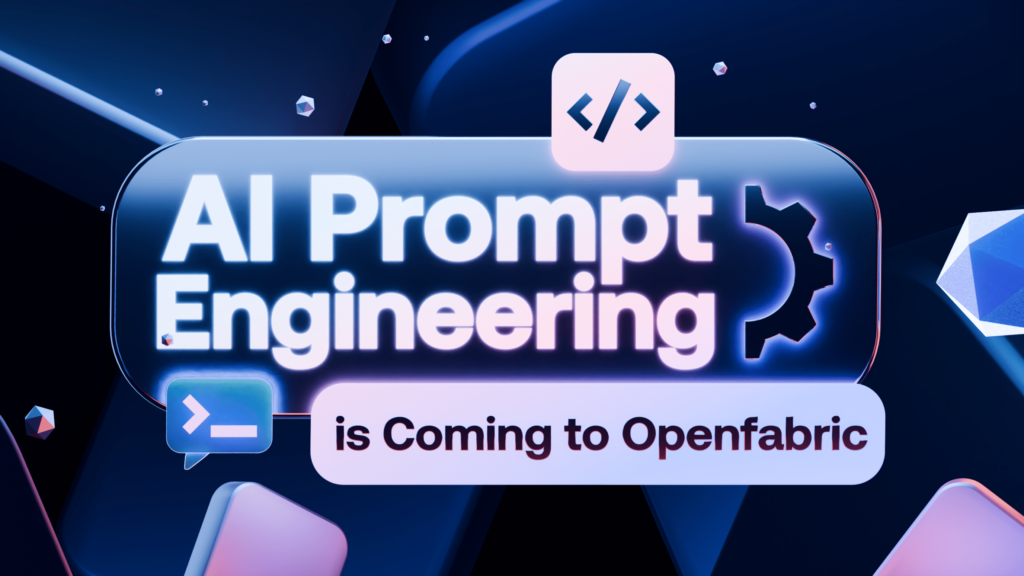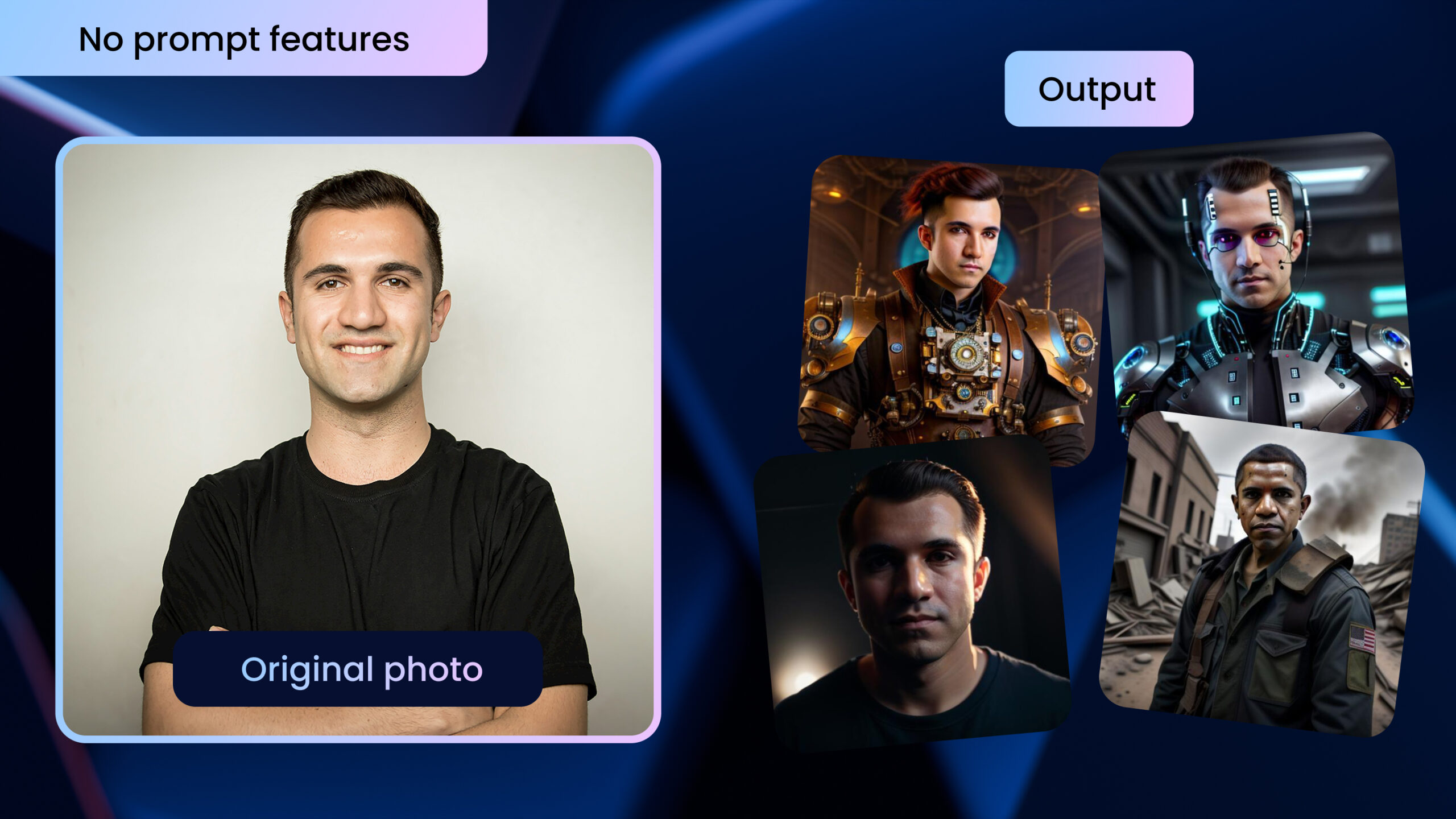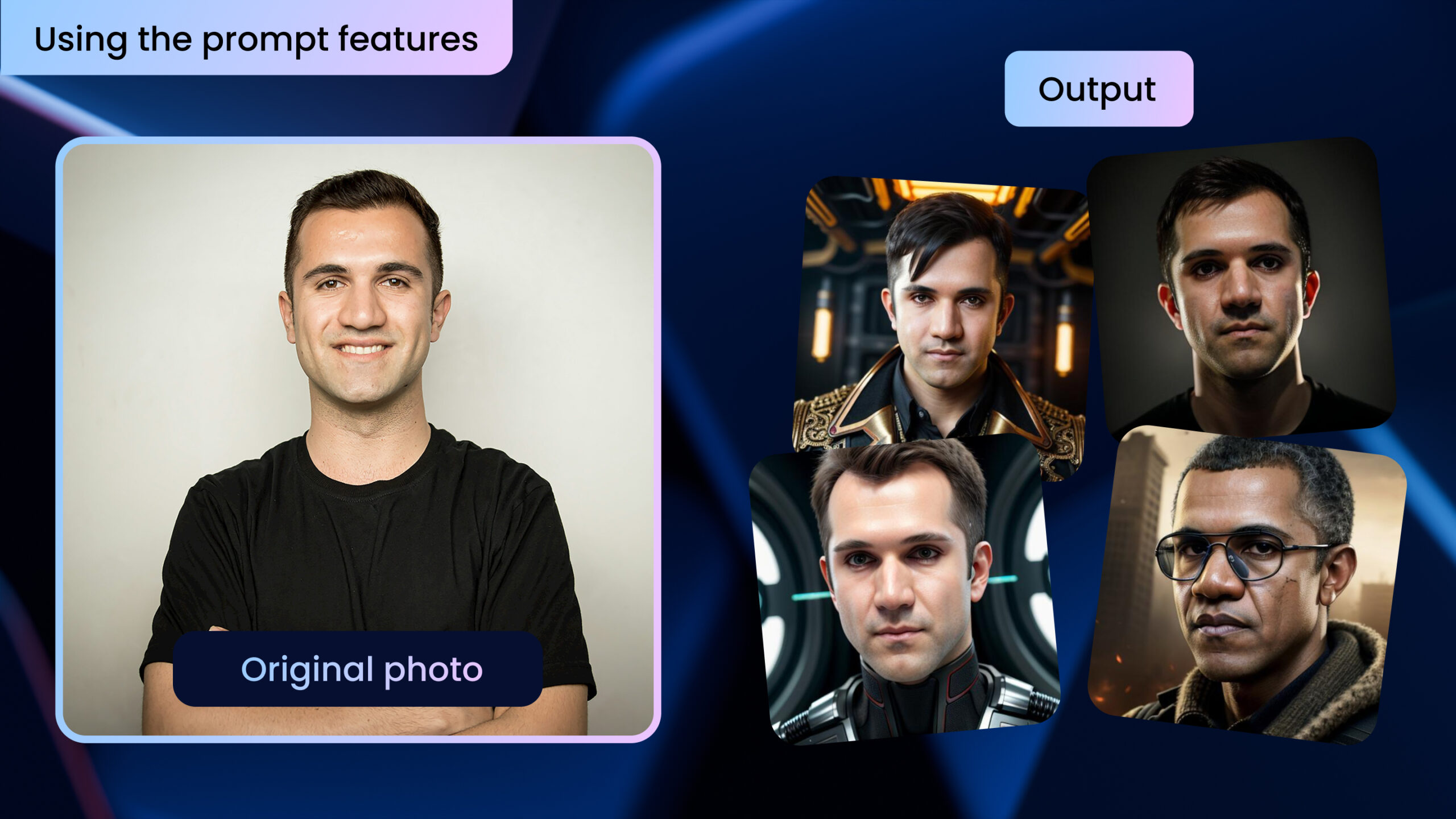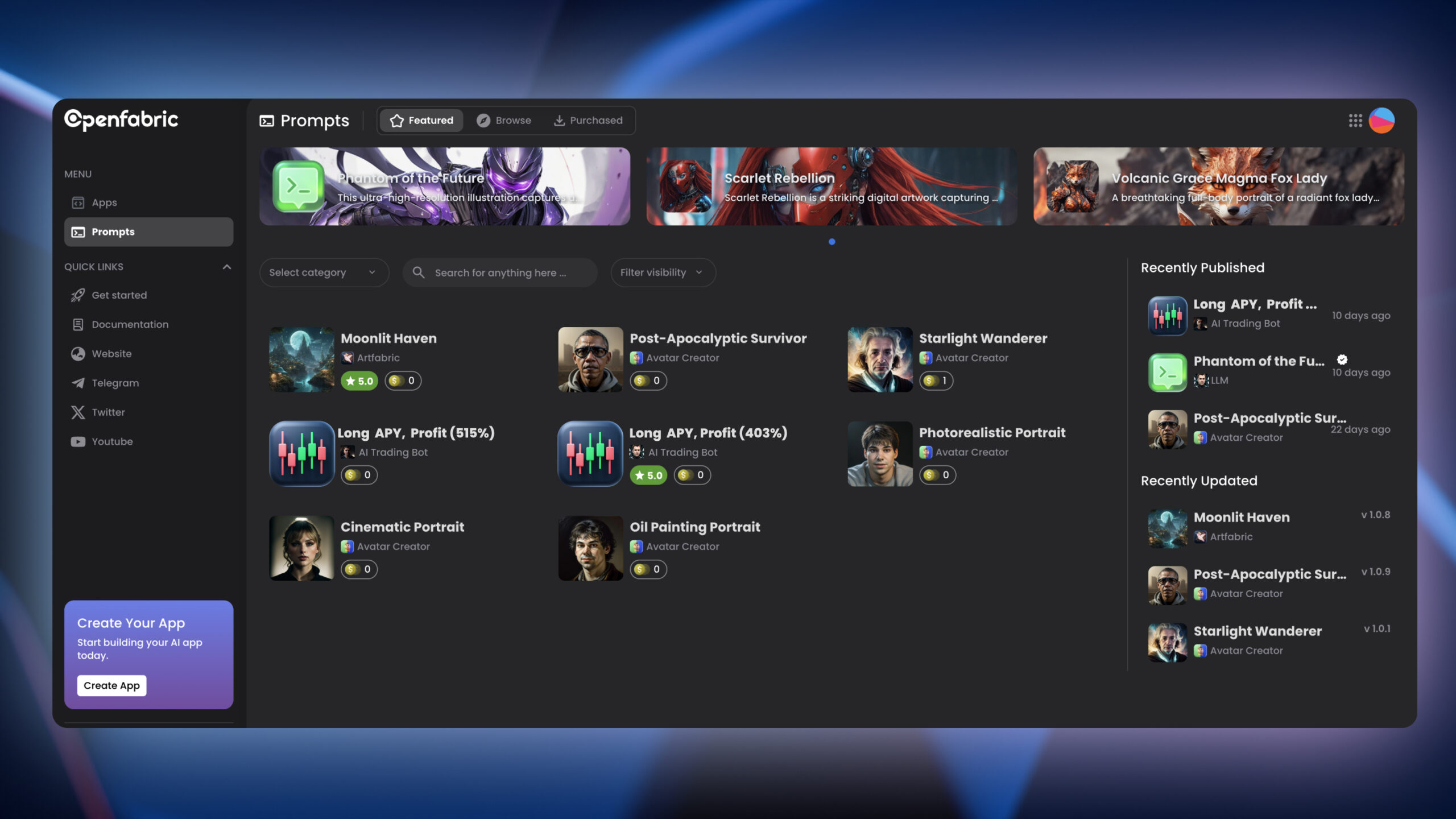
May 9, 2025 8 minutes read
AI Prompt Engineering is Coming to Openfabric

The advent of generative AI was truly a revolution in the AI industry. However, one of the challenges users face is getting the AI tool to give them the desired result. AI does not understand the words we speak, but machine learning technologies like natural language processing (NLP) give AI the ability to interpret, manipulate, and comprehend human language. Unfortunately, NLP alone may not be enough to generate the exact result we want unless AI prompt engineering enters the picture. Hear me out!
AI prompt engineering might be the solution to creating generative AI media with precision and getting satisfaction from the results. Now, while natural language processing is key, AI prompts engineering allows for a more productive use of generative AI. AI requires detailed and well-structured instructions to create high-quality and relevant output.
Prompts are natural language texts that request a generative AI to perform a specific task. Generative AI tools are so open-ended that not every type of input generates helpful content. That is why in this article, we will discuss AI prompt engineering and see how you can use it in Openfabric.
Let’s get started!
What is AI prompt engineering?
AI prompt engineering is a process where individuals guide generative AI applications to generate the desired output. It is necessary because generative AI solutions are so open-ended that they require specific formats, phrases, words, and symbols to generate specific results. AI prompt engineering creates prompts by a careful selection of words and phrases. Through trial and error, prompt engineers create a collection of prompts for users. These prompts are systematically designed to get more meaningful and usable creations from generative AI tools.
What is the importance of prompt engineering?
AI prompt engineering is a highly creative process that might as well be considered an art form. It forms the bridge between end users and generative AI tools.
Also, AI prompt engineering increases the efficiency and effectiveness of using generative AI tools. It is not uncommon to find many people frustrated after several attempts at trying to generate a particular picture or code but without the desired result. This can reduce the motivation to work and slow down the work rate. However, prompt engineering creates prompts that produce the exact result.
In addition, prompt engineering enhances the interaction between the AI tool and the end user. The AI understands the user better and can therefore generate the exact results the user wants. Furthermore, users can easily obtain the desired results with their very first prompt. Therefore, it helps them to avoid the trial and error process, and still get the very best results. Doing so improves user experience.
Input Image:
Simple prompt results:
- “a man with a mecha museum aesthetic, adorned in intricate digital art, steampunk atmosphere”
- “A cinematic-style portrait of a man standing under a single spotlight in a dark room
- “Male cybernetic humanoid Borg”
- “A gritty portrait of barack obama a lone survivor in a post-apocalyptic world”

Using the Prompts feature:
- “steampunk atmosphere, a man with a mecha museum aesthetic, adorned in intricate digital art, fractal, agi in background , 32k UHD high resolution, high res, professional photography, intricate details, masterpiece, perfect anatomy, cinematic angle , cinematic lighting”
- “A cinematic-style portrait of a man standing under a single spotlight in a dark room. The subject’s face is partially illuminated, casting deep shadows on one side, creating a moody and dramatic effect. The person has an intense gaze, and the background fades into darkness, emphasizing the subject’s enigmatic presence”
- “Male cybernetic humanoid Borg, pale white skin with biomechanical implants integrated into the skull eye implant”
- “A gritty portrait of Barack Obama, a lone survivor in a post-apocalyptic world, dust-covered face, tattered clothing, and fierce expression. The background features a ruined cityscape or desert wasteland, with smoky, warm-toned lighting. Details like goggles, scars, or tactical gear add realism”

Introducing Openfabric Prompts: a new era of AI prompt engineering
The need for better prompts that will help users generate relevant results has increased in recent times. However, prompt engineers also need a foundation to build on. This is where Openfabric Prompts comes in.
Openfabric Prompts is a new innovative solution to AI prompt engineering. It is a feature that allows prompt engineers to create various prompts for several AI tools. Engineers display the expected results and the prompts to be used accordingly. Users can then use any of these relevant prompts and apply them in the relevant AI tools to get the exact same result.
At Openfabric, wealth creation is important. As such, prompts engineers can earn when end users purchase and use their prompts. Therefore, prompt engineers create prompts and end users purchase the relevant prompts to use in the applicable AI tools.
What can you do with prompts?
Save your work
Creating prompts is not a straightforward process. It involves trial and error. However, as a prompt engineer, Prompts give you the best environment to create prompts through trial and error and save the inputs, settings, and configuration that gave you the best results. This gives you a blueprint you can build on and tweak accordingly to achieve even better results. So, instead of remembering every single, minute detail, Openfabric Prompts allows you to save and reuse your prompts to reproduce even better results later.
Share prompts
With Prompts, it doesn’t just stop at saving prompts alone. You can also share your best inputs, or configurations with any AI app to reproduce the desired results. Whether it’s a text-to-image masterpiece, an avatar, or a custom unique model, sharing your prompts allows you to reproduce the desired results.
For an even better use, Prompts allows you to add context to a prompt. You can give your prompt a title, description, and even screenshots so others can see what your prompt does before giving it a try.
Explore the community
Openfabric Prompts creates a community for prompt engineers. By being a part of this community, you can browse prompts from other users and see how they achieved particular stunning results, looks, and effects.
Furthermore, this gives you the opportunity to clone a prompt you find interesting or cool. Found a new prompt cool? Clone it, make your edits, and save a new version. This community promotes the growth of every prompt engineer and is friendly to new engineers. Therefore, every member of the community and Openfabric user can become a creator, thus opening the gates to a new industry.
Openfabric Prompts ushers in a new era of AI prompts engineering, for both creators and end users.
Create a new economy
By buying and selling prompts, members of the community are creating a new sustainable economy. However, there are prompts that can be accessed and used for free.
Use cases of Openfabric Prompts
Openfabric Prompts finds real-world applications where you can create prompts for AI tools and applications, and monetize them accordingly. Here are a few applications of Prompts.
- Artfabric: you can create various prompts for different art masterpieces, and showcase the results for users. End users can then pay for these prompts and use them on any generative AI tool to create high-quality and relevant output.
- Avatar generator: it has a similar working principle to Artfabric. However, in this case, the prompts are used to generate avatars instead of artwork.
- AI trading bot: here, it is a little different from Artfabric, and Avatar generator. Prompt engineers showcase the results of their trading bot prompts. Users then purchase these prompts based on how well they have performed in a trade. Since trading involves investing, only prompts with successful outcomes will have a good amount of purchases. However, since prompts allow engineers to save their prompts, you can tweak any ill-performing prompt or improve it for a better performance.
- LLM Prompts: In many scenarios, large language models (LLMS) are difficult to use by end users. Openfabric prompts allow prompt engineers to create prompts for any type of AI application, which will simplify the use of LLMs. The LLM used for the prompt will be able to interact with other models such as chatGPT allowing you to share the prompts to other LLMs seamlessly.

How to use Openfabric Prompts effectively for the best results?
- Be descriptive: add clear names, and short explanations so that others know what your prompt does.
- Upload screenshots: visual previews make your prompt more engaging and trustworthy.
- Use variants: show how small changes in inputs or settings can produce different results. This allows others to learn from, and experiment with your prompts.
- Like and engage with prompts from other engineers to build a stronger creative community.
Conclusion
AI prompt engineering encourages the use of AI tools across several industries. One of the major problems generative AI users face is getting the most accurate and relevant results from their queries. Prompt engineering is one of the AI upskill trends we predicted to see in 2025.
Openfabric prompts allow engineers to create prompts and earn from them. These prompts enhance the effectiveness of tools such as Artfabric and AI trading bot, producing the best results for end users and giving creators the opportunity to earn from the prompts they create.

